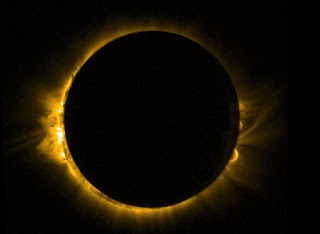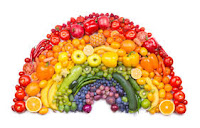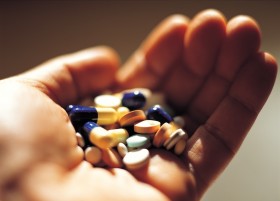 One of our lovely beneficiaries, Maria, talks about her personal cancer journey and how she nurtured herself back to health.
One of our lovely beneficiaries, Maria, talks about her personal cancer journey and how she nurtured herself back to health.
 I
found my medical file, dated 2010. In it there were scan results confirming a
diagnosis of aggressive stage 4b NH Lymphoma with multiple “metastasis in the
liver and peritoneum”. It was my eclipse, the sun blotted out by the moon,
earth into a long night. There was plenty of light available to me, but I
couldn’t see it at the time. I had just lost my mother to cancer, and the news
of my cancer arrived just after my Mum’s funeral. All I wanted and needed at
the time was to be left alone to grieve, to pay appropriate respect to her
memory. She was my whole world and I was heartbroken. This determined very much
what I chose to do next. Had I not lost mum I may have taken a different route.
I
found my medical file, dated 2010. In it there were scan results confirming a
diagnosis of aggressive stage 4b NH Lymphoma with multiple “metastasis in the
liver and peritoneum”. It was my eclipse, the sun blotted out by the moon,
earth into a long night. There was plenty of light available to me, but I
couldn’t see it at the time. I had just lost my mother to cancer, and the news
of my cancer arrived just after my Mum’s funeral. All I wanted and needed at
the time was to be left alone to grieve, to pay appropriate respect to her
memory. She was my whole world and I was heartbroken. This determined very much
what I chose to do next. Had I not lost mum I may have taken a different route.
The
family had gathered around Mum’s bedside. Unbeknown to me, the hospital had
tried a few times to contact me with the results of an MRI on the kidneys
showing the spread of cancer. There followed more scans. I recall going to the
hospital after Mum’s passing. The consultant was very sympathetic when he gave
me my results and asked me, how was it that I was still standing? He insisted
that I was admitted to hospital there and then. I was shocked to say the least.
But I had known on a deeper level that things hadn’t felt right for some time.
The effort to look after my dear mum had taken its toll and I was weary, scared
and had a sense of impending doom.
I
listened to my consultant and went back in the afternoon for admission into
hospital. The hospital planned to perform immediate multiple biopsies to
discover the primary tumours. I turned up to the ward and just as I was walking
along the corridor, a cup that I’d brought with me, which had been given to me
by my Mum, seemed to fly out of my hand and the little cat’s head on the cup
split in two. That was enough for me to walk out of the hospital. I was nervous
enough and very jittery. It was a good move as I had time then to research the
best person to do the biopsy. I requested that person to perform the procedure
a few weeks later, giving me time also to digest the news. The female
consultant performing the biopsy, asked me if could she go in a second time and
take more samples. I replied that once should be sufficient. I had a fear of
too many biopsies spreading the cancer further. And most of all, I needed to
feel comfortable at every stage of my decision making.
It is very interesting looking back at things
from 7 years ago. It’s a real eye opener. I’ve forgotten how tough those days
were. In this medical file, there are letters to and from consultants. My
sister was good enough to take notes during my appointments. I didn’t trust
myself, in the heightened state of mind that I was in, to actually take in all
the facts. I was trying to assess all the time how I was feeling. What felt
right and what didn’t. This was very frustrating for the doctors and for my
family. I even signed a consent form to begin chemotherapy, twice in 3 months.
Each time backing out. Each time I got close to accepting chemotherapy, I
changed my mind. I was presented with worse case scenarios and foregone
conclusions, that I wouldn’t make it beyond 2 or 3 months.
 The
first time I signed a consent form to begin treatment, the professor of the
clinic I was in, took hold of his head and made as if to bang his head on the
wall because he was despairing at my response. I had felt very sorry for him.
Another scan had revealed possible intrusion into another organ. My family,
father, brother, sister, began to push me to accept treatment. They argued
convincingly that one death was enough, having lost Mum, they didn’t want to
lose me too. I signed a second consent form. And again I backed out.
The
first time I signed a consent form to begin treatment, the professor of the
clinic I was in, took hold of his head and made as if to bang his head on the
wall because he was despairing at my response. I had felt very sorry for him.
Another scan had revealed possible intrusion into another organ. My family,
father, brother, sister, began to push me to accept treatment. They argued
convincingly that one death was enough, having lost Mum, they didn’t want to
lose me too. I signed a second consent form. And again I backed out.
I
faced a lot of resistance. The specialist in Alternative medicine was very
clear too. In his opinion, the cancer was of the type and grading which made it
difficult to be successfully treated with alternative means, even if I
travelled to the best clinics in Europe. This wonderful doctor explained to me
that his conscience would not allow him to do anything else but recommend
chemotherapy. At first, he was reluctant to accept me as his patient.
Looking
at this file now, I realise I couldn’t have acquired all the information
without a lot of help. My sister was particularly good at research. And my
brother and sister were good at keeping my spirits up. I listened as best I
could. And each time I’d consider what I felt comfortable doing. There was no
one around me who did not put pressure on me to start chemo.
In
the folder I still have the protocol which I followed for a few months, devised
by the doctor working in the Alternative cancer field. This was a very tough
regime for me to follow… It involved intense juicing and lots of supplements. I
administered coffee enemas daily to clean the liver. It was intense and I
became worn out even more by simply trying to follow it. The alternative doctor
was great though and he tailored it further, so that I wouldn’t abandon it
altogether.
The
pressure continued from all sides. It was difficult not to submit to the
medical model, which could take over my care and simplify everything, and stop
all the internal voices telling me that I wasn’t thinking straight. This was
very compelling for me at the time. But I had a nagging doubt that I would not
survive chemotherapy. There was the NHL and tumours in the liver and
peritoneum. I realised that the primary organ to deal with the drugs
administered, was the liver. And if the liver was in such a bad way, why injure
it further? Somehow it didn't add up. And all along I didn't feel right about
it, yet I did try so hard to convince myself otherwise.
I
felt an overwhelming need to cultivate a feeling of safety, and to promote a
sense of ease within. I had read the leaflets, listened to the experts, chased
down the cancer survivors, friends who were on the way to recovery. I followed
the dietary recommendations but felt uneasy about cutting out so many of the
foods I enjoyed. It’s hard to say which of the practical things I did helped.
But all this effort to keep things going was very draining. I was juggling it
all whilst standing on my head upside down. That’s what it felt like. I
couldn’t see myself in the scrabble for the facts and in the “doing of it all”.
I was so driven to survive, to beat cancer, that I was in danger of undoing any
good that I had achieved. I felt enormous pressure, which was a far cry from
feeling at ease. It was inevitable that I would soon have to slow down.

It
was a turning point of orientation, a shift, which in my opinion was the
clincher. I had a new focus. I began to rediscover my practice of Qi Gong. The
teacher of my style of Qi Gong (“Hua Gong”) taught me simple techniques of how
to repair, contain and settle myself and make space for the real essence (life
energy) to return to the body. I had quite a few “one to one” healing sessions
with him also. I discovered the value of experiencing insubstantiality, a deep
connection to source, whilst remaining deeply grounded. My energy field had
been like a bucket with holes in it. Whilst on a Qi Gong retreat, my dreams
returned to me and were very lucid. Through working with these dreams, I knew I
was going in the right direction. I attended some shamanic ceremonies also but
I’ll talk about this another time. Art therapy brought in the element of play
and creativity. I didn’t have to paint or draw like Rembrandt. I simply let my
unconscious reveal itself and had a lot of fun doing it, whether it was a
scribble or something finer. (I’ve had some brilliant art therapists, who were
so good, and helped me greatly, that it was like magic.) Art and all creativity
was a seam of gold and still plays a massive role in my recovery.
So, I
slowly nurtured myself back to health. I was less fearful and I had a sense of
being at ease. And this flickering light of peace and feeling safe, and
supported by the universe was the single most valuable feeling I could hold on
to. I have a very close friend who has been living with untreatable cancer for
many years. Her vitality, her clarity of mind is truly inspiring. She has
advised me that the best thing I could do for myself was to get out of my own
way. Very wise words. In fighting cancer, without realising it, I became the
biggest obstacle to my own healing.
Looking
back now, I realise that I simply gave my body a better chance of coming back
to itself. I know of people who have also achieved miraculous recovery through
chemotherapy. I can only describe my own journey, as it is so individual a
journey. The turning point of orientation brought in freshness. I still try to
immerse myself in nature, to be amongst trees. Getting fresh air as often as I
can. Cultivating good friendships. Not holding on to grievances. I also found
myself a good talking therapist and I have regular acupuncture, (I found a good
healer who uses both acupuncture and herbs). Friendship, laughter and the full
expression of joy, allowing grief and sadness to appear and dissolve, all play
a huge role in recovery. And actually, is a good way to live, cancer or no
cancer.
If
only I had known about this amazing charity, “Yes to Life”, before. I may have
run around a little less. I’m now an ardent supporter of theirs. All the money
and the focus go on treatments. A charity such as “Say Yes to Life” provides a
life jacket for all those who need support through diagnosis to remission to
recovery and wellbeing.
 Yes to Life have continued to support me by sending me a monthly supply of Liposomal Vitamin C, which helps me support my immune system. This is of great help as it means I am able to still afford other therapies and approaches.
Yes to Life have continued to support me by sending me a monthly supply of Liposomal Vitamin C, which helps me support my immune system. This is of great help as it means I am able to still afford other therapies and approaches.














